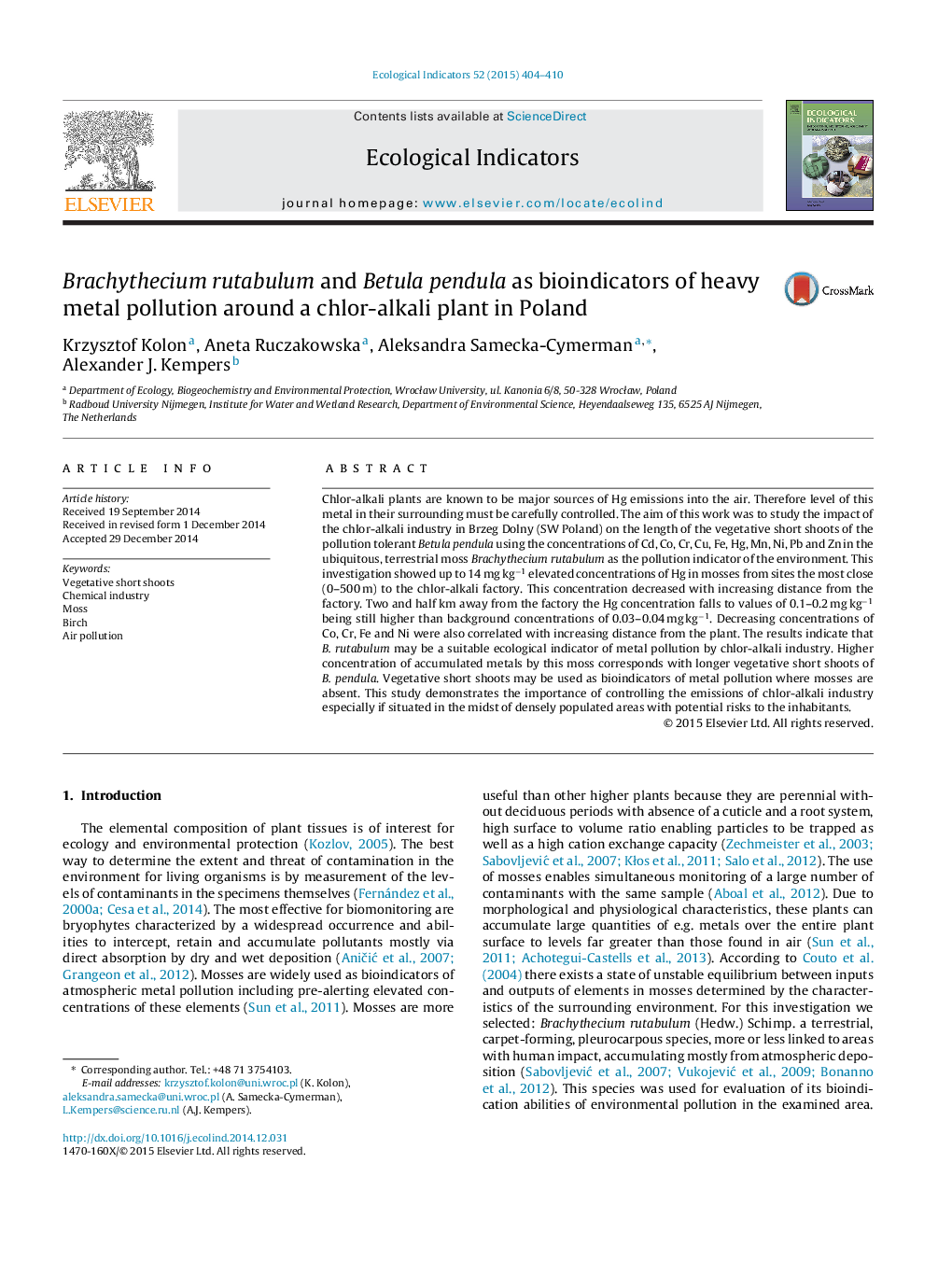| Article ID | Journal | Published Year | Pages | File Type |
|---|---|---|---|---|
| 6294578 | Ecological Indicators | 2015 | 7 Pages |
Abstract
Chlor-alkali plants are known to be major sources of Hg emissions into the air. Therefore level of this metal in their surrounding must be carefully controlled. The aim of this work was to study the impact of the chlor-alkali industry in Brzeg Dolny (SW Poland) on the length of the vegetative short shoots of the pollution tolerant Betula pendula using the concentrations of Cd, Co, Cr, Cu, Fe, Hg, Mn, Ni, Pb and Zn in the ubiquitous, terrestrial moss Brachythecium rutabulum as the pollution indicator of the environment. This investigation showed up to 14 mg kgâ1 elevated concentrations of Hg in mosses from sites the most close (0-500 m) to the chlor-alkali factory. This concentration decreased with increasing distance from the factory. Two and half km away from the factory the Hg concentration falls to values of 0.1-0.2 mg kgâ1 being still higher than background concentrations of 0.03-0.04 mg kgâ1. Decreasing concentrations of Co, Cr, Fe and Ni were also correlated with increasing distance from the plant. The results indicate that B. rutabulum may be a suitable ecological indicator of metal pollution by chlor-alkali industry. Higher concentration of accumulated metals by this moss corresponds with longer vegetative short shoots of B. pendula. Vegetative short shoots may be used as bioindicators of metal pollution where mosses are absent. This study demonstrates the importance of controlling the emissions of chlor-alkali industry especially if situated in the midst of densely populated areas with potential risks to the inhabitants.
Related Topics
Life Sciences
Agricultural and Biological Sciences
Ecology, Evolution, Behavior and Systematics
Authors
Krzysztof Kolon, Aneta Ruczakowska, Aleksandra Samecka-Cymerman, Alexander J. Kempers,
